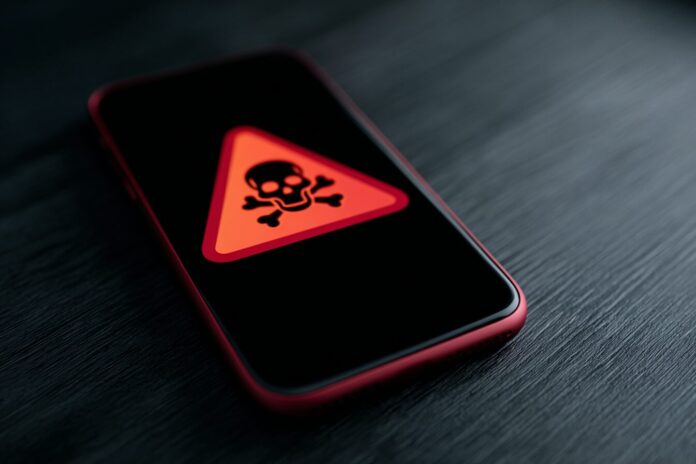Understanding the Threat: SparkCat and Its Impact
In 2025, mobile users faced a wave of sophisticated cyberattacks that shook the fundamentals of mobile security. The SparkCat malware, which infiltrated both Google Play and Apple’s App Store, posed a critical threat by surreptitiously invading devices. Most importantly, this malware was embedded in what appeared to be legitimate applications, leading to widespread risks for users globally.
Because it exploited trusted app distribution channels, SparkCat has forced both developers and users to reconsider app security protocols. In addition to compromising user trust, the malware has raised significant concerns among cybersecurity experts. Furthermore, the incident has spurred industry-wide calls for improved app screening and security measures, as highlighted by experts on Securelist and The Hacker News.
How Did SparkCat Infect App Stores?
Kaspersky security experts revealed that SparkCat managed to infiltrate both iOS and Android applications distributed through official channels. Initially, this malware was discovered in a popular food delivery app in regions such as the United Arab Emirates and Indonesia. Therefore, suspicions quickly grew when further reviews exposed that at least 19 unrelated apps were compromised on Google Play.
Because each of these apps was downloaded over 242,000 times, the scale of exposure was alarming. Besides that, the malware was designed to remain undetected, evading traditional security checks. This rapid infection strategy demonstrates the advanced evasion techniques employed by cybercriminals, as further discussed on TechCrunch and Checkpoint.
What Data Was Stolen?
Because SparkCat was engineered to exploit optical character recognition (OCR) technology, it scanned device photos and screenshots for sensitive data. Most importantly, attackers targeted cryptocurrency wallet recovery phrases using OCR to analyze textual content from images. This clever technique enabled hackers to bypass conventional security measures and gain access to critical financial information.
Moreover, the malware did not limit itself to crypto data. It also collected other personal content such as passwords and private messages that could be found in screenshots. Therefore, even routine actions like capturing a screenshot could inadvertently expose private data. As noted by various security research outlets, including Securelist, the cascading effects of such breaches are severe and extend beyond the immediate financial risks.
How Quickly Did Google and Apple Respond?
In response to the threat, both Google and Apple took swift and decisive action to remove the malicious apps from their stores. Android’s Play Protect feature played a significant role by identifying and neutralizing the harmful versions of SparkCat. Because of these measures, the overall exposure was contained relatively quickly.
Besides that, Google not only removed the apps but also took strict action by banning the implicated developers. In contrast, Apple’s response was less public even though they also removed the affected apps. Most importantly, experts warn that the malware might still exist in unofficial app repositories, making continuous vigilance a priority. These developments have been discussed on platforms like TechCrunch and Apple Newsroom.
Why Are App Store Threats Rising?
The rise in mobile app threats is not an isolated case. Instead, it represents a broader trend where cybercriminals exploit even the most trusted digital marketplaces. Most importantly, sophisticated attackers have mastered techniques to bypass traditional review protocols in app stores. Because every day more malicious applications are discovered, both Google and Apple are investing heavily in advanced security measures.
Moreover, recent incidents like the malicious loan app removal highlight that vulnerabilities remain. Therefore, the emphasis must now shift to continuous monitoring and the development of better detection systems. According to Apple, their vigilance prevented over $9 billion in fraudulent transactions this past year. Such impressive numbers emphasize that even with robust measures, the threat landscape continues to evolve, as seen on Checkpoint and Apple Newsroom.
How Can You Stay Protected?
Because cyber threats continue to evolve, staying vigilant is crucial. Regular updates and security patches are essential to keep your device safe from known vulnerabilities. Most importantly, always download apps from reputable sources, preferably official app stores where baseline security protocols are in place.
Furthermore, carefully review app permissions. For instance, if an app requests access to your photo gallery, it is wise to question the necessity of such permissions. Besides that, use security features like Google Play Protect and enable multi-factor authentication for added safety. Simple habits such as these can mitigate risks, as emphasized across cybersecurity platforms like The Hacker News and TechCrunch.
Broader Implications for the Mobile Ecosystem
Because mobile ecosystems are expanding rapidly, security challenges have also grown more complex. The SparkCat malware incident is a wake-up call for developers and users alike. Most importantly, it underlines the need for continuous improvement in security protocols across both app platforms.
Moreover, this incident has sparked a broader conversation about the responsibilities of app developers and digital marketplaces. Therefore, industry stakeholders now call for enhanced encryption practices, increased transparency during app reviews, and better user education. Such steps are critical to maintaining trust in a digital age, keeping both personal data and financial assets secure.
The Bottom Line
In conclusion, the SparkCat malware incident serves as a significant reminder that even the most trusted app stores are not immune to cyber threats. Most importantly, it reinforces the message that proactive security measures are essential. Because attackers regularly adapt their methods, users must likewise update their security practices to stay ahead.
Besides that, leveraging tools like automatic updates and integrated security features can considerably reduce risk. Therefore, let this incident be a catalyst for improved mobile security practices. For further reading and the latest updates, please visit reputable sources like Securelist, TechCrunch, and The Hacker News.



